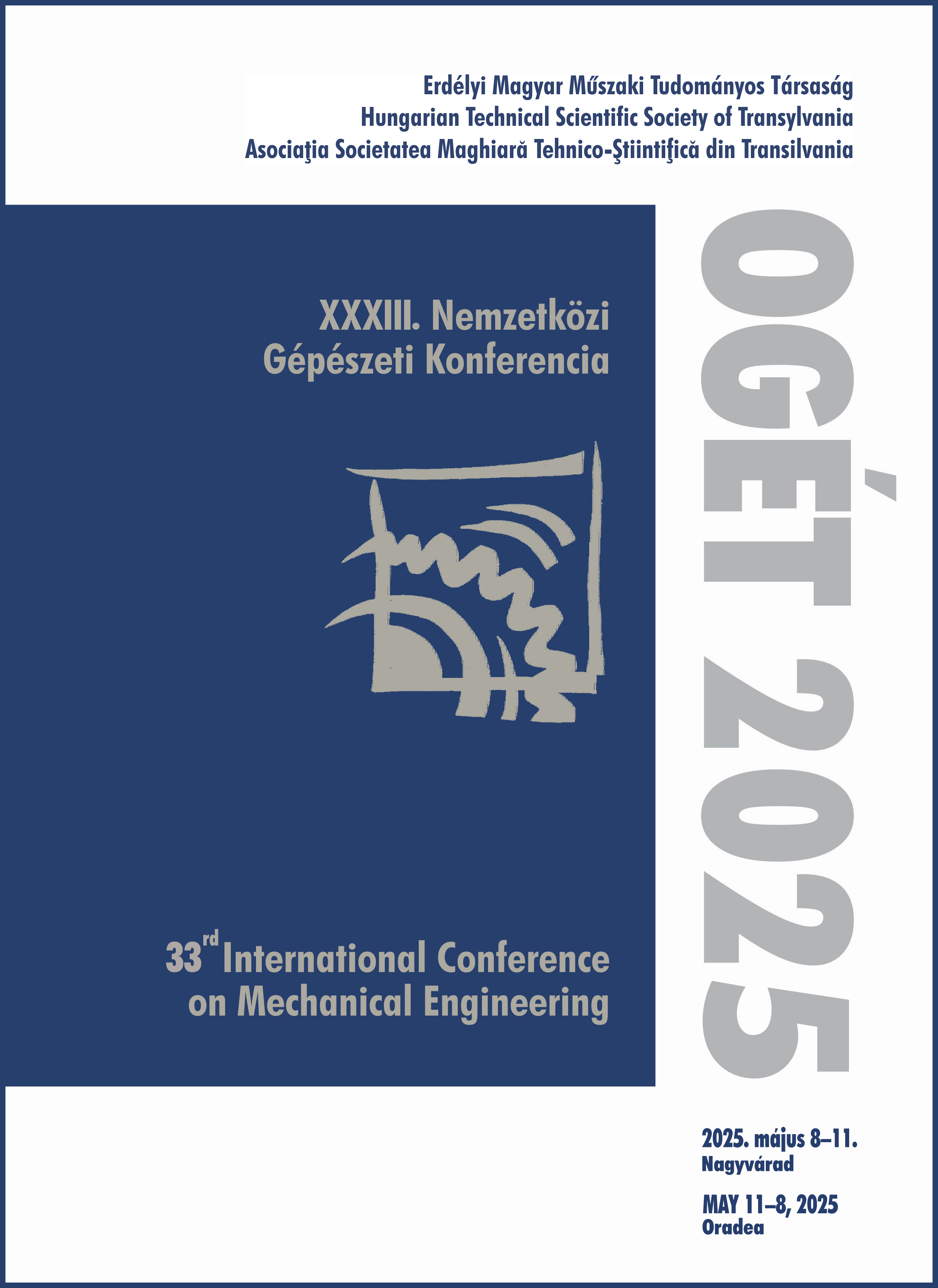Irányfüggő poliszilícium anyagmodellek összehasonlítása MEMS strukturális elemek mechanikai modellezésénél
Comparison of direction-dependent material models for use in the simulation of MEMS structural elements
Keywords:
MEMS, polysilicon, orthotropic material, transversal material, grain, /, poliszilícium, ortotróp anyagmodell, szemcseAbstract
Whether we speak about smartphones, wearables, hearables, drones, or cars, they all contain MEMS (micro- electro-mechanical system) sensors for the realization of different functions. The most common consumer applications are navigation, pressure and height measurement, voice detection, fitness and health functions. In the automotive industry, they are used for detecting crashes and monitoring the engine and the power train.
The main material of MEMS sensors is the polysilicon, consisting of single crystal silicon grains. These grains with their size of 1–2 µm are in general not negligible compared to the length scale of the MEMS structures (10 – 100 µm). Moreover, the grains acquire a columnar shape because of the deposition method, which lends a transversal elastic characteristic to the structures. The commonly applied isotropic assumption can lead to significant errors in this case.
In the present study, a comparison of a homogeneous isotropic, a transversal and an orthotropic (single- crystal) model is made in the cases of a tensile and a bending loading of a beam. The comparisons are based on simulations with random grain structures.
Kivonat
Akár okostelefonról, fülhallgatóról, okosóráról, drónról vagy autóról beszélünk, mindegyikről elmondható, hogy MEMS (micro-electromechanical system, mikro-elektromechanikai rendszer) szenzorokat tartalmaz különböző funkciók megvalósításához. A leggyakoribb felhasználási területek a navigáció, a lépésszámlálás, a beszéd érzékelése, illetve az autók esetében az ütközés felismerése, valamint a motor és hajtáslánc megfigyelése.
A MEMS szenzorok fő anyaga a poliszilícium, amely egykristály szemcsékből áll. Ezek az 1 – 2
µm-es méretükkel a szenzorstruktúrák kis méretskálájából (10 – 100 µm) adódóan általánosságban nem elhanyagolhatóak. Továbbá a szemcsék a növesztés hatására oszlopszerűek lesznek, amely a struktúrának transzverzális tulajdonságot kölcsönöz. A gyakran alkalmazott izotróp feltételezéssel ebben az esetben jelentős hibát követhetünk el.
Jelen tanulmányban egy húzott és egy hajlított rúd példáján hasonlítjuk össze egy homogén izotróp, egy transzverzális és egy ortotróp (egykristály) szilícium anyagmodell viselkedését. Az összehasonlítás alapját mindkét esetben olyan szimulációk képezik, amelyek a szemcse-elrendezést is modellezik.
References
Boroch R. E. Mechanical Properties and Fatigue of Polycrystalline Silicon under Static and High Frequency Cyclic Loading, 2007.
Mariani S., Ghisi A., Fachin F., Cacchione F., Corigliano A., Zerbini S. A three-scale FE approach to reliability analysis of MEMS sensors subject to impacts. Meccanica, 2008, 43, 469–483. doi: 10.1007/s11012-008-9111-0
Hopcroft M. A., Nix W. D., Kenny T. W. What is the Young’s Modulus of Silicon? Journal of Microelectromechanical Systems, 2010, 19, 229–238. doi: 10.1109/JMEMS.2009.2039697
Mullen R. Monte Carlo simulation of effective elastic constants of polycrystalline thin films. Acta Materialia, 1997, 45, 2247–2255. doi: 10.1016/S1359-6454(96)00366-7
Boroch R., Wiaranowski J., Mueller-Fiedler R., Ebert M., Bagdahn J. Characterization of strength properties of thin polycrystalline silicon films for MEMS applications. Fatigue & Fracture of Engineering Materials & Structures, 2007, 30, 2–12. doi: 10.1111/j.1460-2695.2006.01055.x
Gad-el-Hak M. The MEMS Handbook, CRC Press, 2001.
Ansys Inc. Ansys LS-Dyna, Ansys Enterprise Mechanical. 2024 R2 verzió. 2024. https://www.ansys.com/products/ structures/ansys-ls-dyna


